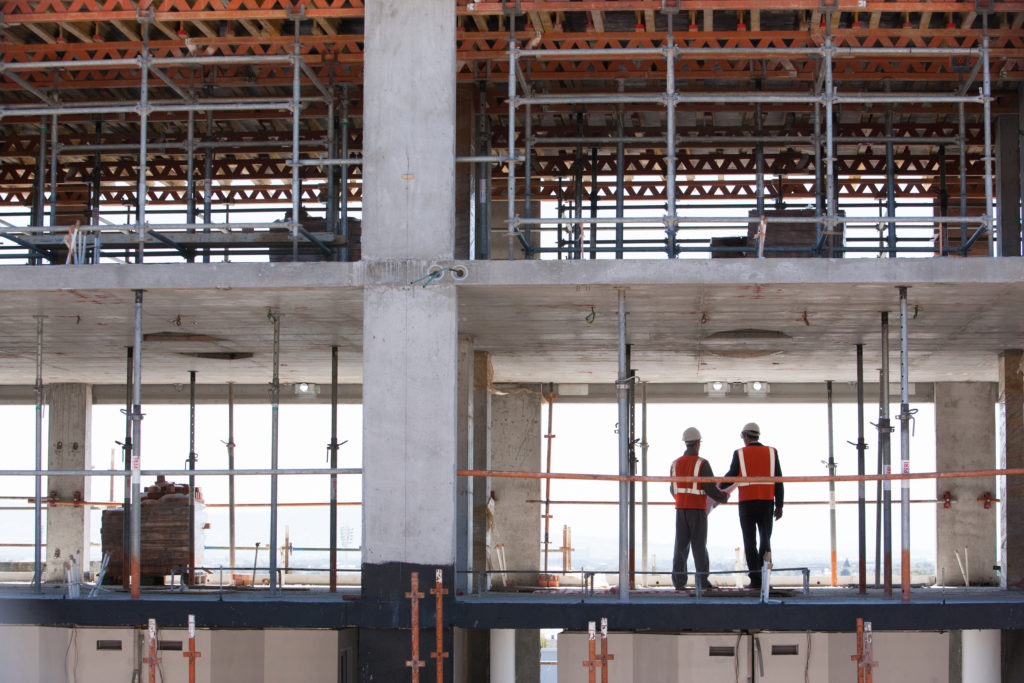Key Points
- In the 2020-21 financial year, Australia granted 44% fewer skilled visas than two years earlier, with more than three-quarters issued to people already in the country.
- The drop in visas was concentrated among ICT professionals, particularly those working in household services and repair & maintenance.
- From August to October 2021, overseas clicks on Australian job postings rose considerably as a share of total clicks, perhaps in anticipation of borders reopening.
Australia’s COVID-19 border closures have sent a wrecking ball through the nation’s immigration system, greatly reducing skilled migration and international visits. As Australia’s labour market tightens, concern is growing that Australian businesses will face significant skill shortages.
Following border closures, foreign jobseeker interest in Australian jobs has fallen throughout the pandemic, according to Indeed data. In recent months though, that interest has sprung back to life, perhaps in anticipation that border closures will end.
The key question is whether borders will open fast and wide enough to take advantage of the renewed interest. A full and immediate recovery in travel appears unlikely, particularly after the emergence of the Omicron COVID variant. A limited recovery would continue to constrain Australia’s skilled migration system, impairing the ability of Australian businesses to address skill shortages.
Who are Australia’s skilled migrants?
Australia’s temporary skilled migration programme is broad, covering a range of industries and occupations. The programme regularly faces review and change, often becoming politicised. Still, it has some consistent characteristics that have persisted through different administrations.
- In the 2020-21 financial year, around half of Australian temporary skilled visas came from three industries: information, media & telecommunications; healthcare & social assistance; and professional, scientific & technical services.
- New South Wales and Western Australia punch above their weight. New South Wales receives 44% of temporary skilled migrants, but accounts for only 30% of national employment. Western Australia accounts for almost 11% of employment, but accepts 14.8% of skilled migrants.
- Close to 40% of skilled migrants come from India and the UK. The Philippines is also a rich source of talent for Australian businesses.
Skilled migration plunged during the pandemic
In 2020-21, Australian skilled visas were 44% lower than in 2018-19, the last financial year uninterrupted by the COVID-19 pandemic.
The programme effectively stopped in the June quarter of 2020, with fewer than 1,000 visas granted. Since then, they have risen, but quarterly visa grants are still well short of pre-pandemic levels. Visas granted in the September quarter 2021 were a third lower than in the same quarter two years earlier.
The gross numbers don’t tell the full story. With borders closed, most of the grants have gone to migrants already in Australia, either renewing existing visas, applying for different types of visas or taking steps toward permanent residency.
External visas to people outside Australia fell to 23% of overall temporary skilled visas granted in the 2020-21 financial year. That’s down from 50% a year earlier and the range between 50% to 60% since 2005-06. In the September quarter, external visas rebounded to 39%.
Quite simply, through most of the pandemic, if you wanted a temporary skilled visa to work in Australia, you had better already be here, because otherwise your chances were slim.
Tech occupations driving decline in skilled visas
While the decline in temporary skilled visas granted in 2020-21 was large, it was by no means even. In 2020-21, the ‘other services’ category accounted for a third of the drop since 2018-19. Five industries accounted for around 70% of the fall.
Skilled visas for the unfortunately named other services — a sector that includes household services and repairs & maintenance — have fallen 77% since 2018-19, primarily driven by a 95% industry wide decline in ICT professionals.
There was also a hefty 42% fall in professional services, a category that accounts for around 14% of the total two-year drop. Grants in construction and accommodation & food services also fell sharply.
Only one sector, healthcare & social assistance, posted a two-year decline of less than 10%.
Foreign interest in Australian jobs beginning to recover
The marked drop in overseas jobseeker interest in Australia-based jobs during the pandemic has started to change in recent months.
From January to October 2021, overseas jobseekers accounted for 6.4% of clicks on Australian job postings, up from 5.7% last year, though still below the 6.7% average rate in 2019.
More recently, from August to October this year, the overseas click share on Australian job postings jumped to its highest level since December 2019. That may indicate a growing appetite for Australian jobs in anticipation of borders reopening.
The pandemic decline in overseas click share has been most pronounced in a range of high-education occupations. Most prominent is engineering, in particular, of the industrial, electrical and civil varieties. Jobs in information design, scientific research, mathematics and banking & finance have also gotten relatively less interest from overseas jobseekers.
That isn’t to say some of these occupations aren’t still attracting considerable interest from jobseekers based outside Australia. Part of the reason that overseas clicks on engineering jobs have fallen so much is because they were so high before the pandemic. Nevertheless, for occupations where skills shortages exist, even a small change in suitable candidates can hinder recruitment.
The share of clicks from abroad has increased considerably in a range of occupations. Some of these are blue collar positions in fields such as installation & maintenance and production & manufacturing that haven’t traditionally been big users of Australia’s temporary skilled migration programme. Others though, such as physicians & surgeons or construction, fit firmly in areas that in the past garnered a high number of skilled visas.
Australia’s temporary skilled visa programme will begin to ramp up as borders reopen. In fact, we already saw some modest recovery in the September quarter. That recovery though still has a long way to go and could potentially be delayed by the emergence of the Omicron variant.
The challenge for Australia will be attracting highly skilled workers in a tight and globally competitive labour market. Jobs in many economies, including those from places where Australia traditionally attracts talent, are now tighter than before the pandemic. Australian businesses will need to be proactive in attracting overseas talent if they are to compete successfully against other countries.
Methodology
The Australian data on temporary skilled migration is sourced from the Department of Home Affairs quarterly report on visas granted. The visa data is broken down into categories such as industry and occupation.
The location of Indeed clicks is based on the IP address of the jobseeker. Each job posting on Indeed is classified into an occupational category consistent over time.






